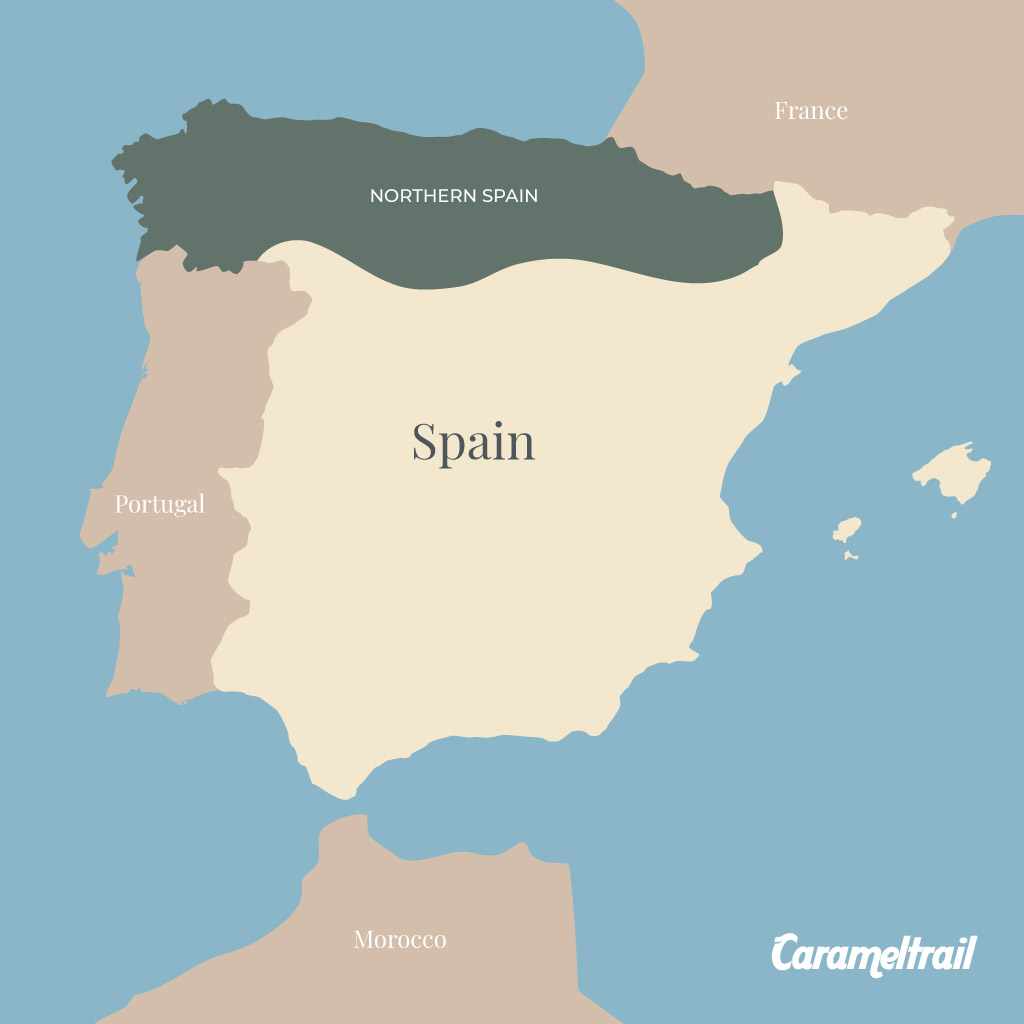
Santiago de Compostela Tours: St James Cathedral
Saint James Cathedral from Santiago de Compostela in Northern Spain is an iconic symbol of the city of Santiago and the final point for many pilgrims walking or cycling the Camino de Santiago. The Cathedral welcomes pilgrims from all over the world.
Over the centuries, thousands of pilgrims worldwide have made their way to the Cathedral of Santiago de Compostela, in Galicia. The pilgrims’ routes here are known as the Camino de Santiago, the ways to Santiago.
Discover the cultural riches and unspoiled landscapes of northwest Spain as you walk or cycle the Camino.
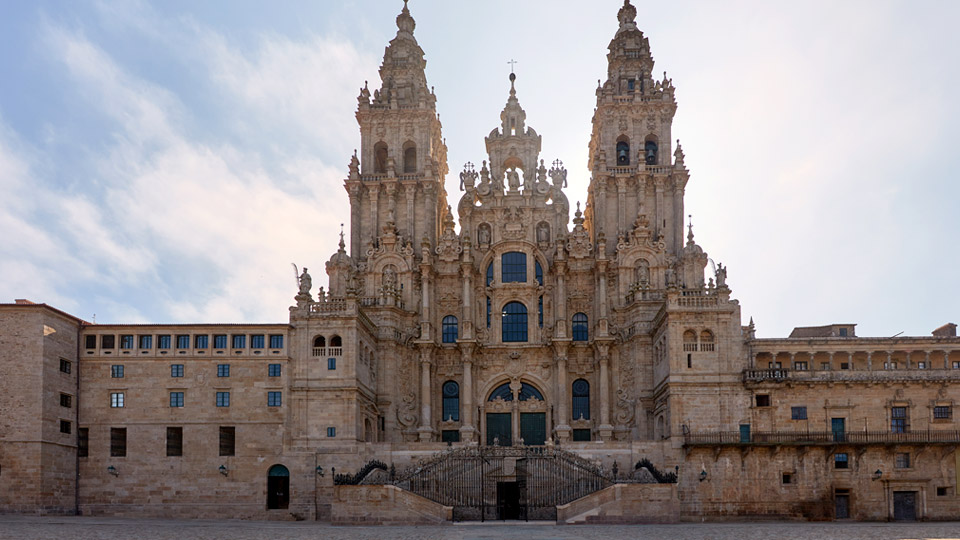
TAKE A TOUR IN GALICIA TO SEE SANTIAGO DE COMPOSTELA
Situated in the northwest part of the Iberian Peninsula, Galicia is part of Spain, and yet it is a world away. The temperate climate and plentiful rains have given this land a grassy landscape that’s in contrast to the rest of Spain. Here you’ll find thundering rivers bordered with dense forested valleys, and an overall lushness that has earned this corner the title of “Green Spain”.
In the far North West corner of Spain, for centuries now the Celtic land of Galicia has much to offer to today’s tourists. Apart from its rich heritage, the city of culture of Galicia is a beautiful coastline and an interior with many little-known wonders. For the foodies there’s plenty to taste with Spain’s best seafood and some fantastic white wines as well as good meat and garden produce.
Here you’ll find the historic city of Santiago de Compostela: the resting place of Saint James the Apostle, and the final stop on Europe’s most legendary pilgrimage trail.
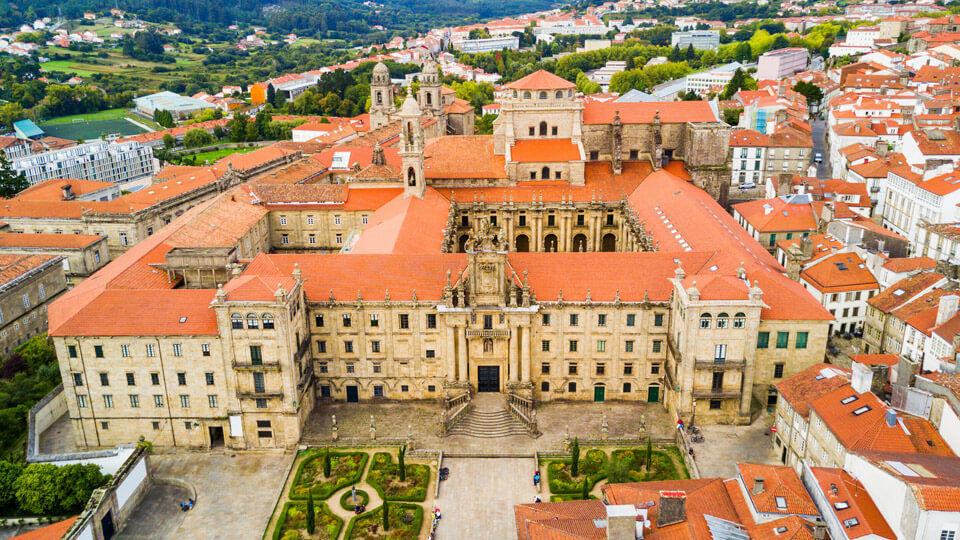
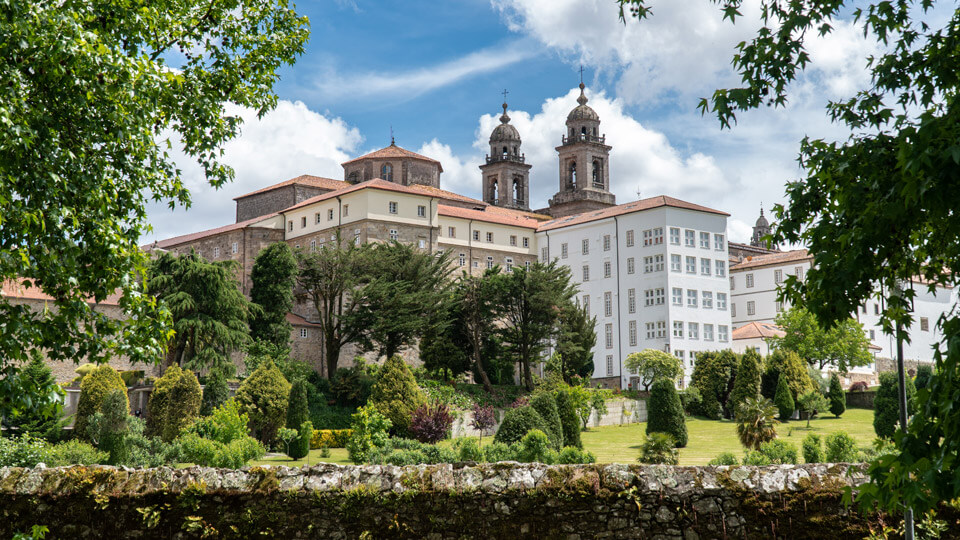
SAINT JAMES IN SANTIAGO DE COMPOSTELA CATHEDRAL
Many people think and believe that the Cathedral site from Santiago de Compostela is the place where the Great Saint James, an apostle of Jesus Christ, rests. So, the mortal remains of Saint James and those of the two of his disciples are kept in a silver jar that is placed in the catacomb beneath the Main Altar.
The artifacts of St. James transformed Santiago De Compostela into an important destination for many pilgrims globally
The Cathedral of Santiago de Compostela is among the most visited places in Spain and once you are here and have seen this marvelous historic site you will understand the reasons.
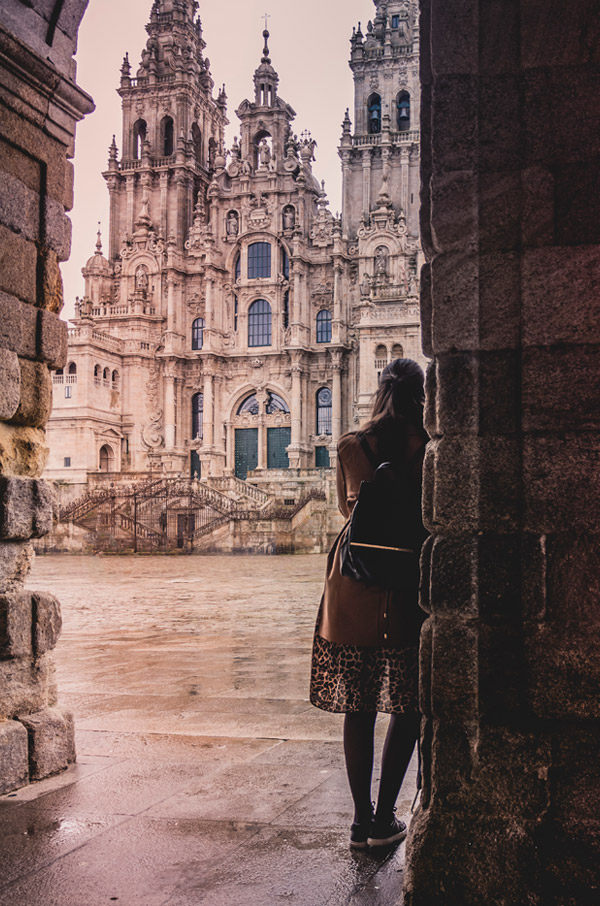

ST JAMES CATHEDRAL IS SANTIAGO DE COMPOSTELA CATHEDRAL
The beauty of Santiago de Compostela is the medieval city. Once completely walled, the city boasts its original narrow and circular streets that add charm, while at the same time they are confusing the visitor. The most important point of the city is the grand cathedral.
The Way of St James (Camino de Santiago) was declared a World Heritage Site by UNESCO
The beauty of its architecture is beyond doubt. This is one of the main reasons why this architectural wonder gathers thousands of visitors worldwide.
La Catedral de Santiago de Compostela is one of the most important religious places in Spain and it is also surrounded by other historic buildings like Rajoy Palace, the Gelmirez Palace, or Catholic Kings Hostal.
Once you step inside, you’ll most likely be shocked at how different the interior is from the outside. That’s due to the fact that most of the façades were reworked seven centuries after the church’s construction. Semicircular arches are everywhere, and heavy barrel-vaulted ceilings required the load-bearing walls to be thick and sturdy.
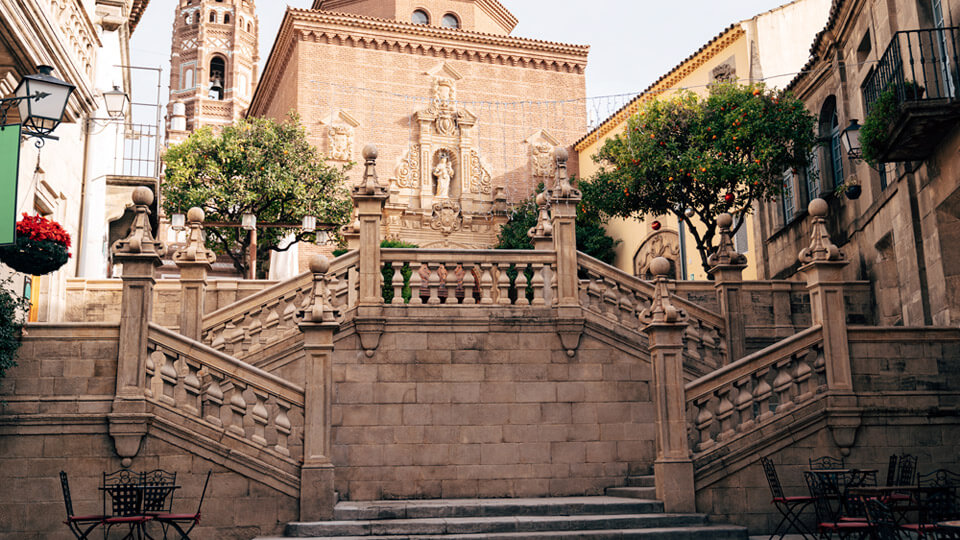
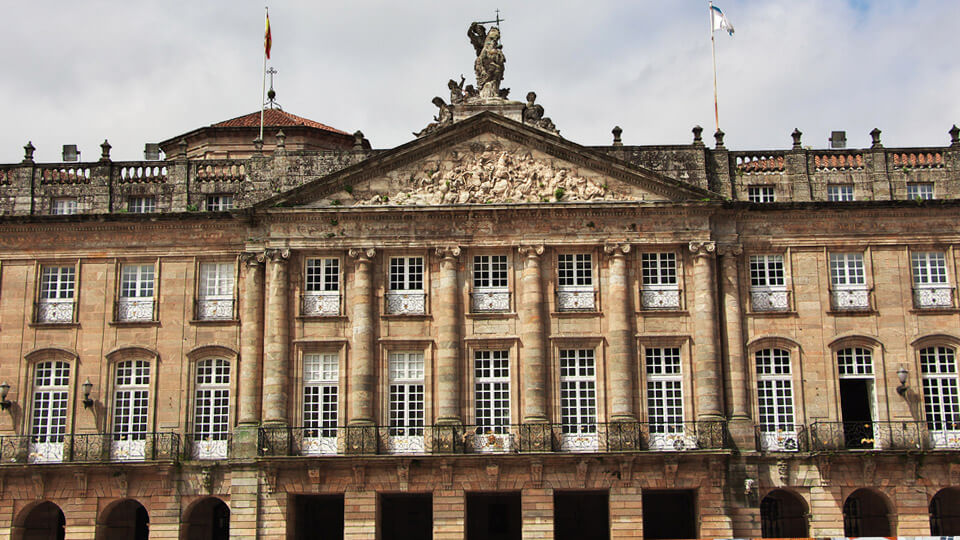
The Camino de Santiago is the best known Spanish pilgrimage trail. And the Cathedral of Santiago de Compostela It is the final destination of this pilgrimage
Santiago’s cathedral was designed with pilgrims in mind. Following the layout of similar pilgrimage churches, the architects extended the aisles on either side of the main nave where worshippers gather and wrapped them all the way around the apse, the east end behind the altar. This way the pilgrims can walk around the entire church without interrupting religious services.
The beautiful cathedral is a UNESCO World Heritage Site and represents a truly grand finale to this pilgrimage
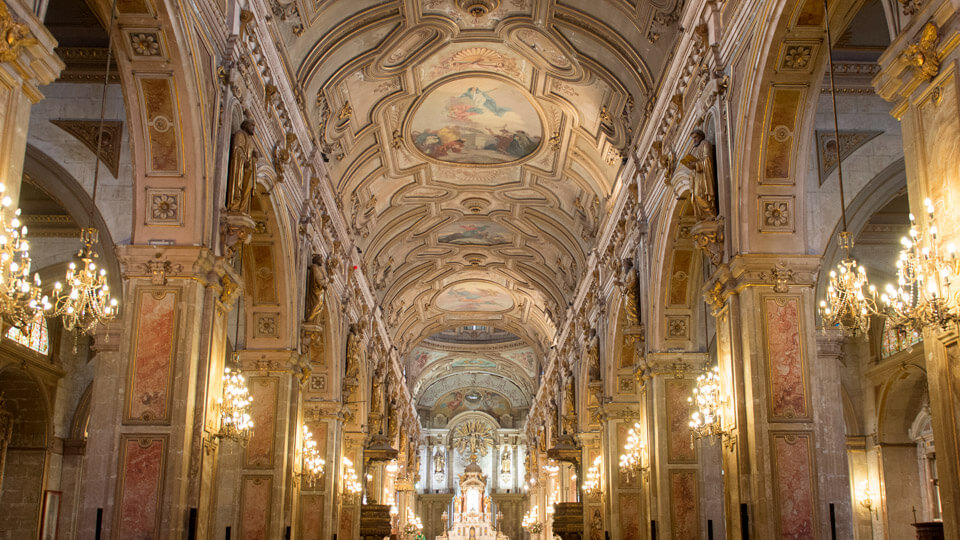
The Cathedral of Santiago makes possible for the pilgrims to walk around the interior and to pay homage in chapels before getting to its center.
A Pilgrim’s Mass takes place every day and the immense incense burner swings its smoky way across all the cathedral.
Maybe the most interesting point for the visitors is the high altar which is located above the crypt where the relics of Saint James are placed. This altar has a Baroque style, glittering with gold and above it there is a statue of the saint that can be embraced by pilgrims and tourists through a special opening.
BAGPIPE MUSIC
Bagpipes are a musical instrument that is not so common and that uses a reed and air provided by the player. This mix creates a distinctive and peasant sound which is known as the bagpipe music. Bagpipes instruments have been here for many hundreds, or maybe thousands, of years and some people trace the origin of this instrument back to the snake pipes from the Middle East.
We have to mention that bagpipes are quite difficult to harmonize with other instruments and for this reason they are usually played in small groups or in bands made up only of pipes, or sometimes pipes and drums. The construction od this instrument is complex and even so they have been a favorite instrument in Europe for quite some time.
Perhaps because of the ancient nature of the sound they make, the Galician bagpipes present a lyric, almost magical quality in the tone they create. They are an honored instrument as they manage to express emotions.
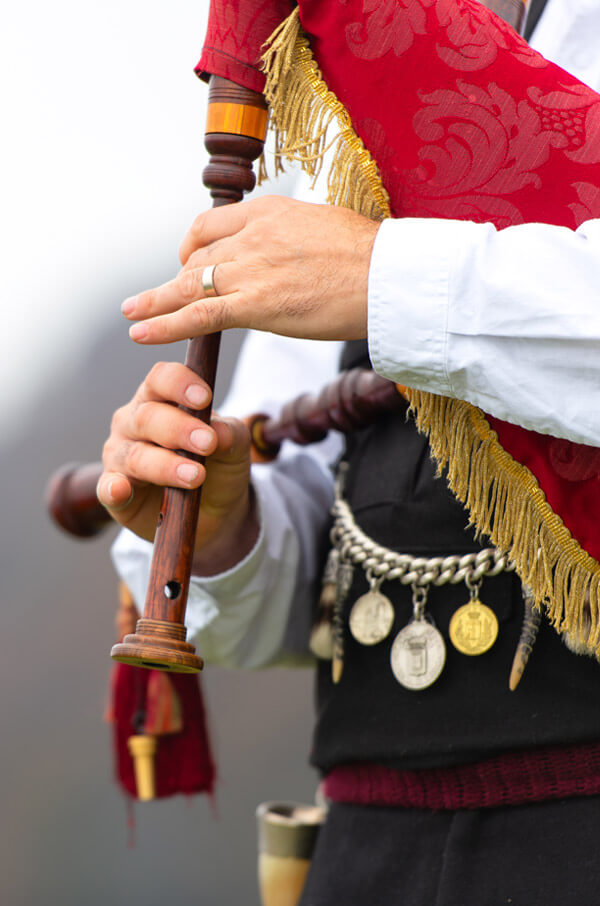
Bagpipes are unique as a musical instrument
The “Gaita Galega” or Bagpipes
The Galicians call the bagpipes “gaita galega” and these instruments can be traced back to the Middle Ages (as far as the 13th and 14th centuries).
These bagpipes are similar to the ones from Scotland and Ireland, but with some slight differences. There are two versions of the “gaita”: one that has a conventional “mouth” blown bag and another one that uses a different pump type action.
The sound they produce is also different due to the “drones” (which produce the sound). Normally, the Galician “gaitas” have three drones.
Besides, there is another difference: the color and the pattern of the fabric because it reflects the colors of Celtic Galicia.
When you are in Santiago de Compostela it is very likely to hear the sound these instruments produce and enjoy their music.
TAKE THE SANTIAGO DE COMPOSTELA TOUR!
GUIDED TOURS
Most of the guided tours heading Santiago de Compostela and Saint James Cathedral include access to the cathedral museum, which contains cool artifacts and religious art.
By choosing this tour you will have the opportunity to find yourself and your inner peace while enjoying the views of the magnificent Galicia.
¡Buen Camino!





